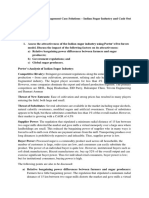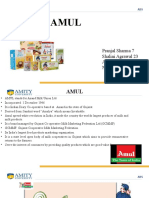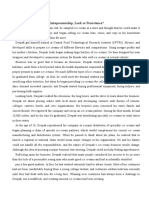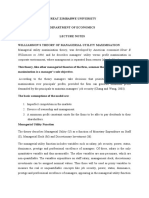0% found this document useful (0 votes)
225 views6 pagesPrince Singh Rajput
The document discusses factors that affected the supply and demand of onions in India from December 2010 to January 2011, leading to a sharp rise in onion prices. On the supply side, unfavorable weather damaged crops in major onion-producing regions. Onion supplies also declined due to lack of adequate storage facilities. On the demand side, population growth and rising incomes increased onion consumption. The government intervened by imposing price ceilings, but this led to shortages as supplies could not meet demand at the artificially low price. The government also faced criticism for previous policies that may have exacerbated price volatility in the onion market.
Uploaded by
PRINCE SINGH RAJPUT Student, Jaipuria IndoreCopyright
© © All Rights Reserved
We take content rights seriously. If you suspect this is your content, claim it here.
Available Formats
Download as DOCX, PDF, TXT or read online on Scribd
0% found this document useful (0 votes)
225 views6 pagesPrince Singh Rajput
The document discusses factors that affected the supply and demand of onions in India from December 2010 to January 2011, leading to a sharp rise in onion prices. On the supply side, unfavorable weather damaged crops in major onion-producing regions. Onion supplies also declined due to lack of adequate storage facilities. On the demand side, population growth and rising incomes increased onion consumption. The government intervened by imposing price ceilings, but this led to shortages as supplies could not meet demand at the artificially low price. The government also faced criticism for previous policies that may have exacerbated price volatility in the onion market.
Uploaded by
PRINCE SINGH RAJPUT Student, Jaipuria IndoreCopyright
© © All Rights Reserved
We take content rights seriously. If you suspect this is your content, claim it here.
Available Formats
Download as DOCX, PDF, TXT or read online on Scribd
/ 6































































































